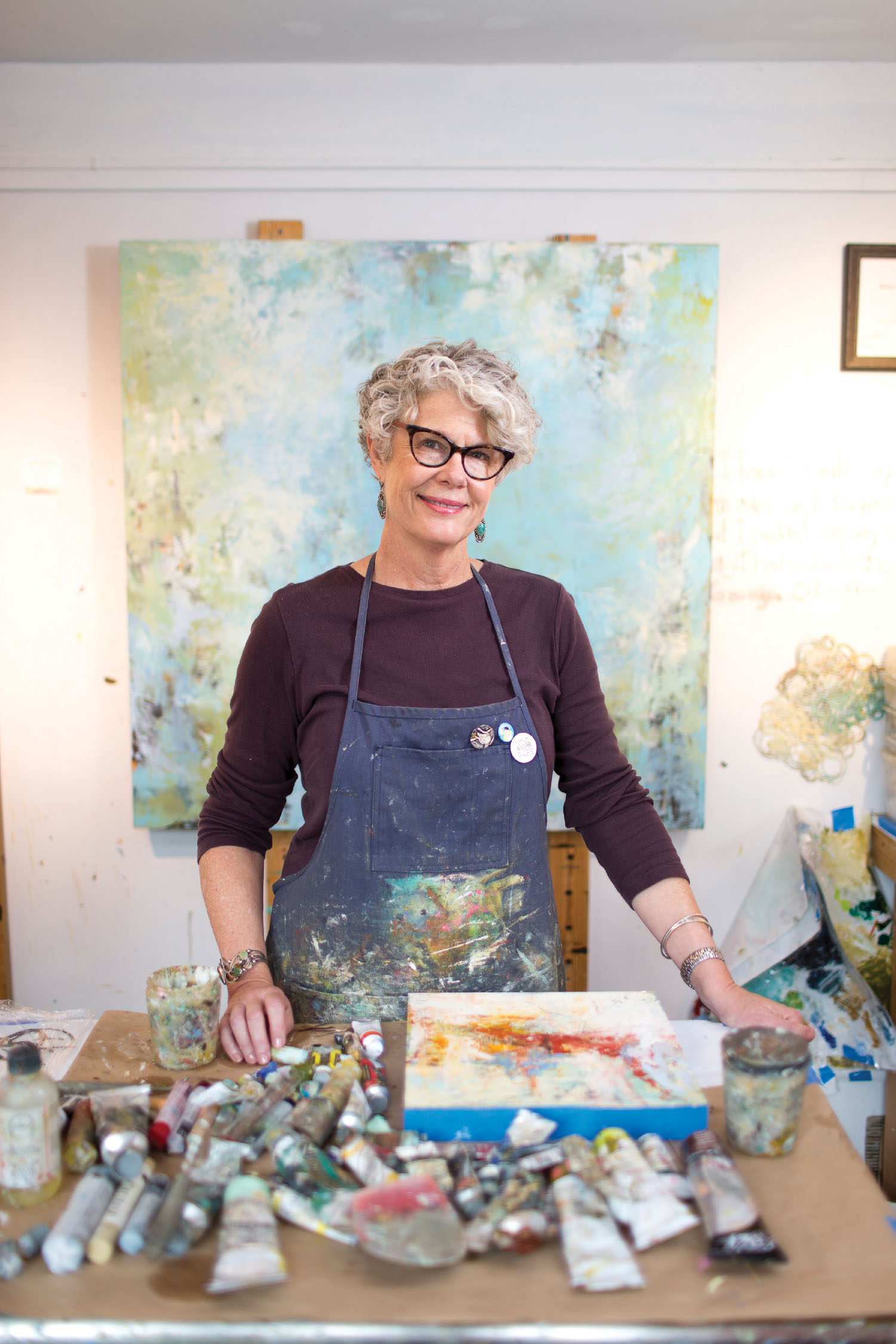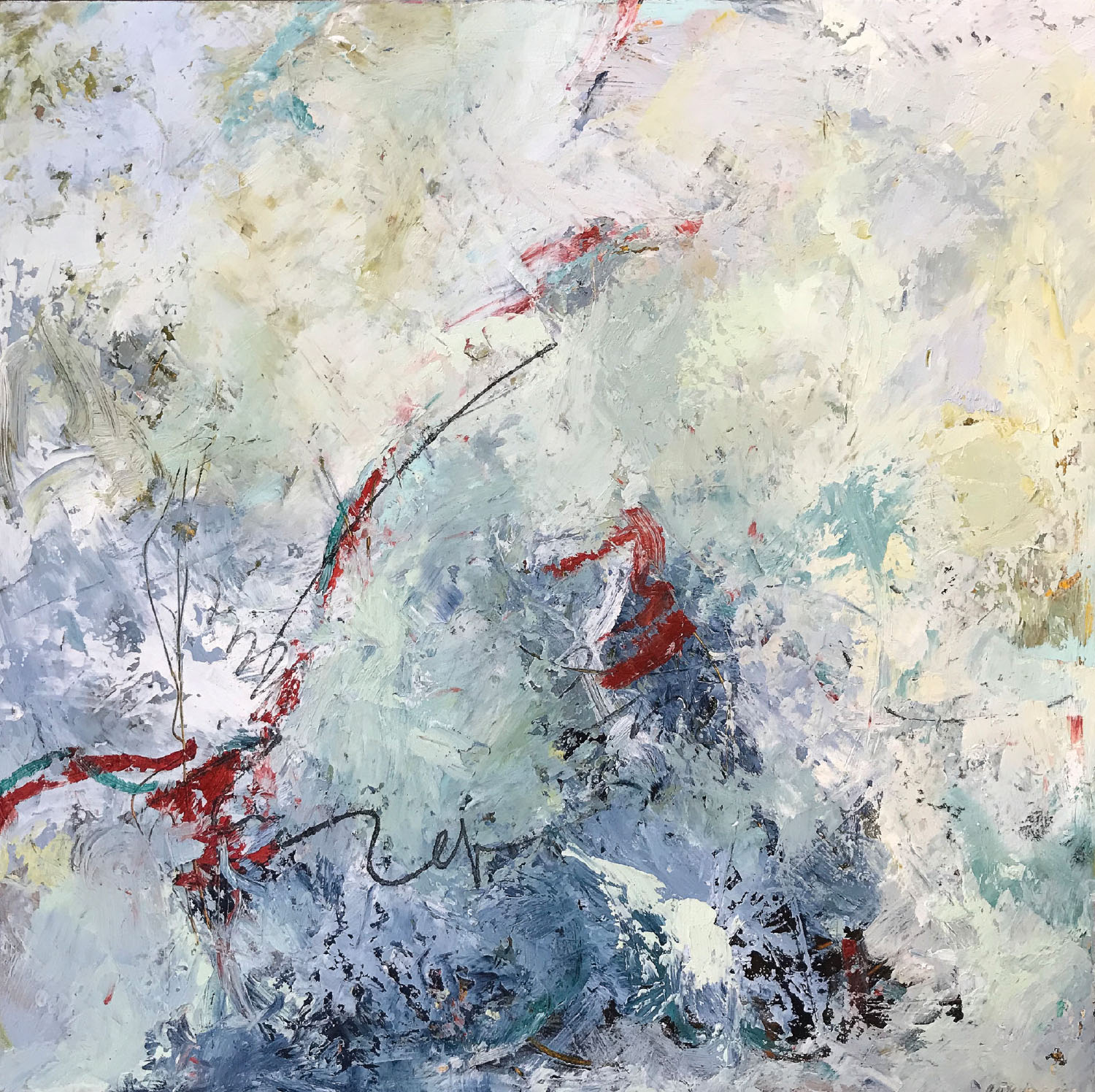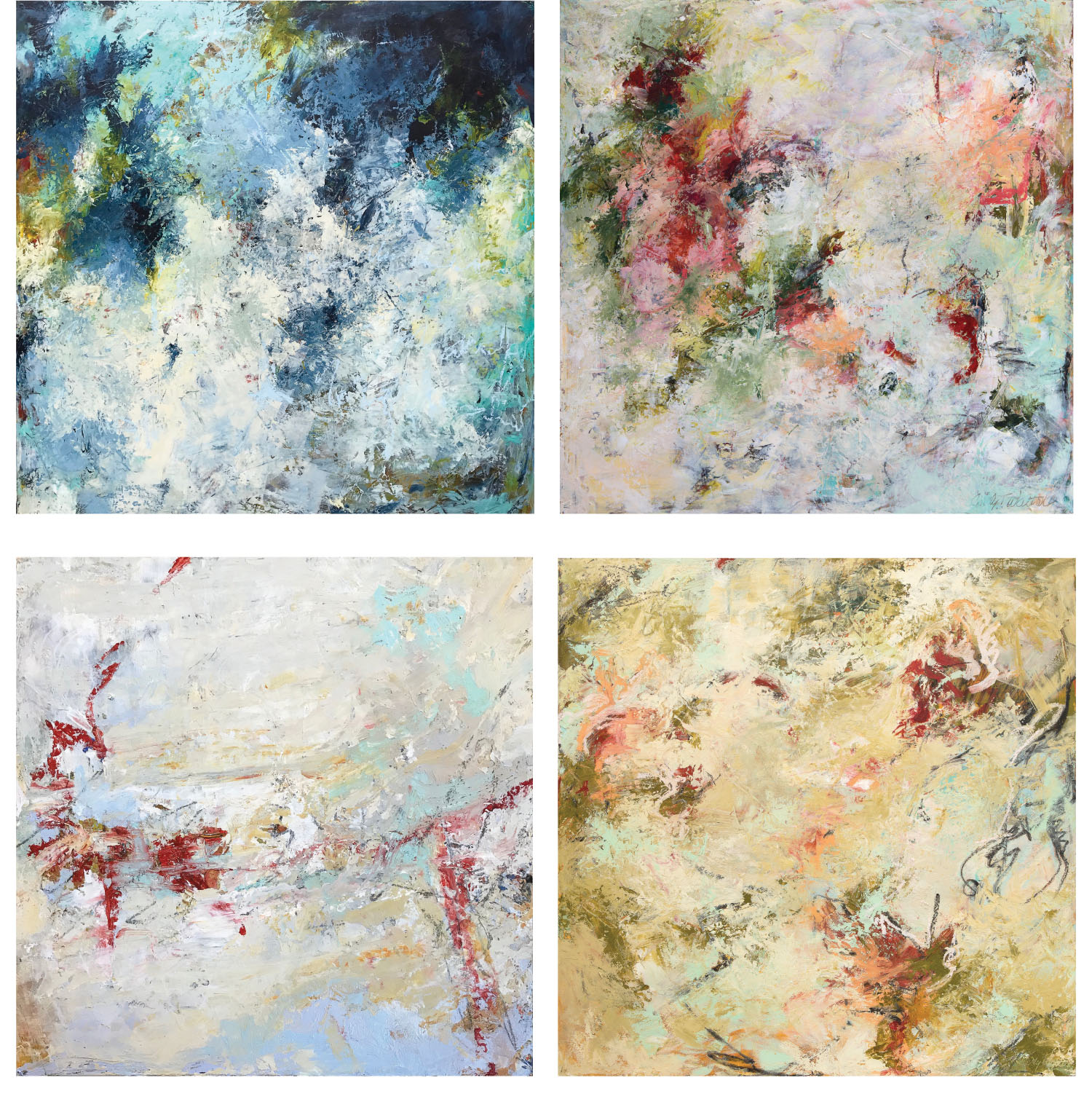
Portrait by Matt Rose
When Cindy Walton enters her painting studio, she leaves everyday concerns at the door. She moves swiftly, “attacking” the canvas. “My main thing is not to leave it blank for long,” she says. “I try to let the paint lead me.”
It helps to be there on a consistent basis. “No matter where my studio has been located over the years, I have made a commitment to paint each week — whether I want to or not.” She admits, “Sometimes I’m not inspired to work, but I go and let the world of my studio work its magic.”
Walton paints with cold wax (beeswax, turpentine, and resin) combined with oil. “When mixed with oils there’s a body to the paint that is different from oil-based mediums,” she explains. She’s able to control the mixture’s consistency to suit her needs: “To thin the paint, I can add turpentine.” To thicken it, she uses powdered marble, sand, or powdered pigment. In warm weather, she sometimes refrigerates the wax; otherwise it might be softer than she needs.

Walton piles on thick paint (using a palette knife, brayer, squeegee, brush, or even her hand) to build a history of layers. “I love the idea of history in all parts of life — the thoughts of what went before on the land or sea … people I meet. The painting’s story from beginning to end is very intriguing.”
She began her career doing more figurative works, but recently her pieces have been more abstract. Even so, “I believe an artist does not leave past knowledge behind,” she says. “[We bring our] entire toolbox of skills, tools, emotions, memories, and past styles to each painting. These things are who we are.”
As an example, she talks about trees. “[It’s] not just a tree, but the essence of the tree, the movement of the tree, the memories of the tree. Maybe even the emotional response to the tree.”
With all this going on, is it hard to know when a painting is finished? “There are several things I look for,” she says. “First, composition. Does the painting flow the way I would like it to? Does it rhumba, as one of my daughters used to say when she was little? Second, how does it look close up and at a distance? I like the viewer to be drawn [in] and pushed away by the mystery of the pieces.”

Cindy Walton, Studio 2A at Wedge Studios (129 S. Roberts St. in the River Arts District). Walton’s paintings are sold at 310 ART Gallery (191 Lyman St. at Riverview Station, RAD) and are also displayed at the Hotel Indigo Asheville Downtown (151 Haywood St.) and the Hilton Garden Inn Asheville Downtown (309 College St.). Walton’s studio hours at Wedge are 11am-4pm Thursday through Saturday, “or anytime the door is open.” For more information, call 828-776-3034 or see cindywalton.com.